PLX4032 resistance of patient-derived melanoma cells: crucial role of oxidative metabolism
- PMID: 37534247
- PMCID: PMC10391174
- DOI: 10.3389/fonc.2023.1210130
PLX4032 resistance of patient-derived melanoma cells: crucial role of oxidative metabolism
Abstract
Background: Malignant melanoma is the most lethal form of skin cancer which shows BRAF mutation in 50% of patients. In this context, the identification of BRAFV600E mutation led to the development of specific inhibitors like PLX4032. Nevertheless, although its initial success, its clinical efficacy is reduced after six-months of therapy leading to cancer relapse due to the onset of drug resistance. Therefore, investigating the mechanisms underlying PLX4032 resistance is fundamental to improve therapy efficacy. In this context, several models of PLX4032 resistance have been developed, but the discrepancy between in vitro and in vivo results often limits their clinical translation.
Methods: The herein reported model has been realized by treating with PLX4032, for six months, patient-derived BRAF-mutated melanoma cells in order to obtain a reliable model of acquired PLX4032 resistance that could be predictive of patient's treatment responses. Metabolic analyses were performed by evaluating glucose consumption, ATP synthesis, oxygen consumption rate, P/O ratio, ATP/AMP ratio, lactate release, lactate dehydrogenase activity, NAD+/NADH ratio and pyruvate dehydrogenase activity in parental and drug resistant melanoma cells. The intracellular oxidative state was analyzed in terms of reactive oxygen species production, glutathione levels and NADPH/NADP+ ratio. In addition, a principal component analysis was conducted in order to identify the variables responsible for the acquisition of targeted therapy resistance.
Results: Collectively, our results demonstrate, for the first time in patient-derived melanoma cells, that the rewiring of oxidative phosphorylation and the maintenance of pyruvate dehydrogenase activity and of high glutathione levels contribute to trigger the onset of PLX4032 resistance.
Conclusion: Therefore, it is possible to hypothesize that inhibitors of glutathione biosynthesis and/or pyruvate dehydrogenase activity could be used in combination with PLX4032 to overcome drug resistance of BRAF-mutated melanoma patients. However, the identification of new adjuvant targets related to drug-induced metabolic reprogramming could be crucial to counteract the failure of targeted therapy in metastatic melanoma.
Keywords: BRAF; PLX4032; glutathione; melanoma; oxidative metabolism; pyruvate dehydrogenase; targeted therapy resistance.
Copyright © 2023 Garbarino, Valenti, Monteleone, Pietra, Mingari, Benzi, Bruzzone, Ravera, Leardi, Farinini, Vernazza, Grottoli, Marengo and Domenicotti.
Conflict of interest statement
The authors declare that the research was conducted in the absence of any commercial or financial relationships that could be construed as a potential conflict of interest.
Figures

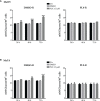
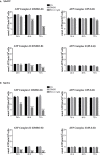
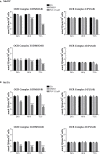
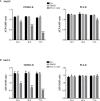



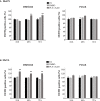
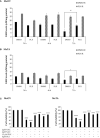

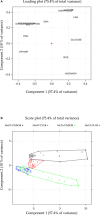
Similar articles
-
Pharmacodynamic characterization of the efficacy signals due to selective BRAF inhibition with PLX4032 in malignant melanoma.Neoplasia. 2010 Aug;12(8):637-49. doi: 10.1593/neo.10414. Neoplasia. 2010. PMID: 20689758 Free PMC article.
-
HO-1 Limits the Efficacy of Vemurafenib/PLX4032 in BRAFV600E Mutated Melanoma Cells Adapted to Physiological Normoxia or Hypoxia.Antioxidants (Basel). 2022 Jun 14;11(6):1171. doi: 10.3390/antiox11061171. Antioxidants (Basel). 2022. PMID: 35740068 Free PMC article.
-
Identification of MET and SRC activation in melanoma cell lines showing primary resistance to PLX4032.Neoplasia. 2011 Dec;13(12):1132-42. doi: 10.1593/neo.111102. Neoplasia. 2011. PMID: 22241959 Free PMC article.
-
Vemurafenib in patients with BRAF V600E mutation-positive advanced melanoma.Clin Ther. 2012 Jul;34(7):1474-86. doi: 10.1016/j.clinthera.2012.06.009. Epub 2012 Jun 27. Clin Ther. 2012. PMID: 22742884 Review.
-
Vemurafenib.Recent Results Cancer Res. 2014;201:215-25. doi: 10.1007/978-3-642-54490-3_13. Recent Results Cancer Res. 2014. PMID: 24756795 Review.
Cited by
-
Strongly ROS-Correlated, Time-Dependent, and Selective Antiproliferative Effects of Synthesized Nano Vesicles on BRAF Mutant Melanoma Cells and Their Hyaluronic Acid-Based Hydrogel Formulation.Int J Mol Sci. 2024 Sep 19;25(18):10071. doi: 10.3390/ijms251810071. Int J Mol Sci. 2024. PMID: 39337557 Free PMC article.
-
PTC596-Induced BMI-1 Inhibition Fights Neuroblastoma Multidrug Resistance by Inducing Ferroptosis.Antioxidants (Basel). 2023 Dec 19;13(1):3. doi: 10.3390/antiox13010003. Antioxidants (Basel). 2023. PMID: 38275623 Free PMC article.
-
Antiproliferative Imidazo-Pyrazole-Based Hydrogel: A Promising Approach for the Development of New Treatments for PLX-Resistant Melanoma.Pharmaceutics. 2023 Oct 4;15(10):2425. doi: 10.3390/pharmaceutics15102425. Pharmaceutics. 2023. PMID: 37896185 Free PMC article.
-
Tri-Phenyl-Phosphonium-Based Nano Vesicles: A New In Vitro Nanomolar-Active Weapon to Eradicate PLX-Resistant Melanoma Cells.Int J Mol Sci. 2025 Mar 30;26(7):3227. doi: 10.3390/ijms26073227. Int J Mol Sci. 2025. PMID: 40244045 Free PMC article.
-
OXPHOS inhibition overcomes chemoresistance in triple negative breast cancer.Redox Biol. 2025 Jun;83:103637. doi: 10.1016/j.redox.2025.103637. Epub 2025 Apr 15. Redox Biol. 2025. PMID: 40253748 Free PMC article.
References
-
- Michielin O, van Akkooi ACJ, Ascierto PA, Dummer R, Keilholz U. ESMO guidelines committee. electronic address: clinicalguidelines@esmo.org. cutaneous melanoma: ESMO clinical practice guidelines for diagnosis, treatment and follow-up. Ann Oncol (2019) 30:1884–901. doi: 10.1093/annonc/mdz411 - DOI - PubMed
LinkOut - more resources
Full Text Sources
Research Materials

